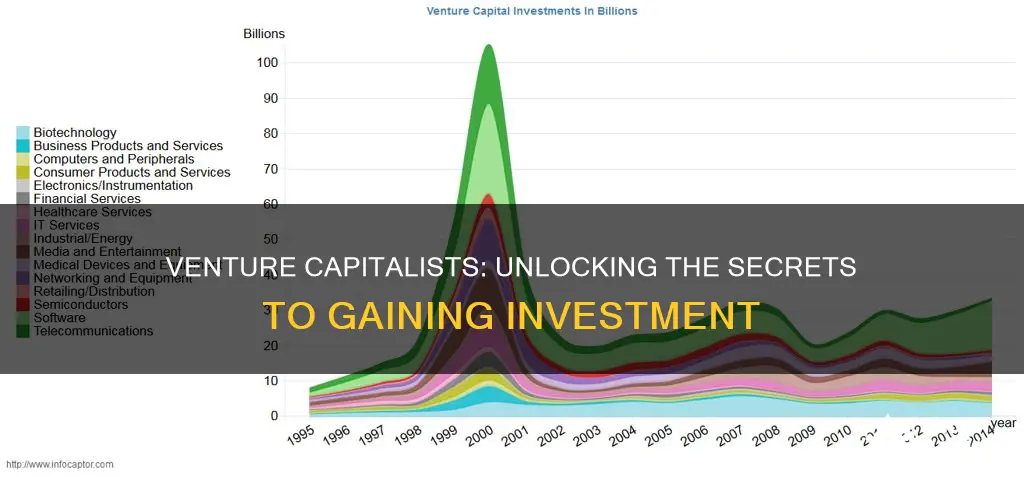
Finding venture capitalists (VCs) willing to invest in your startup can be a daunting task. VCs are looking for high-growth companies that can provide significant returns on their investments, so it's important to understand what they are looking for and how to attract their attention. Here are some key strategies to find VCs willing to invest:
1. Focus on alignment: Look for VCs whose investment preferences and long-term vision align with your startup's needs and goals. Consider their portfolio of companies, funding stage preferences, and exit strategies.
2. Make warm connections: Introductions through credible references or mutual connections are more effective than cold outreach. Utilize your network to find connections to VCs and create a personalised pitch tailored to their investment criteria.
3. Utilize online platforms: Use online platforms, investor databases, and VC associations to identify potential investors. Resources like Visible Connect and National Venture Capital Association (NVCA) can help you find VCs that match your criteria.
4. Leverage social media: Engage with potential investors on social media platforms like Twitter and LinkedIn. Introduce your business and showcase your expertise to increase your chances of booking a meeting.
5. Network, network, network: Building relationships is crucial. Attend industry events, conferences, and networking opportunities to connect with VCs. Send regular updates to investors to build trust and conviction in your business.
6. Pitch with confidence: Craft a compelling elevator pitch and pitch deck that highlights your unique value proposition, target market, competitive advantage, and experienced management team. Be prepared to answer questions and showcase your expertise during the pitch meeting.
7. Demonstrate a large market opportunity: VCs look for startups targeting large, addressable markets with the potential for significant revenue generation. Demonstrate the market size, competition, and growth potential to attract their attention.
| Characteristics | Values |
|---|---|
| Management team | Experienced, qualified people who will play central roles in the company's development |
| Business concept and plan | A great idea, a competitive edge, and a solution to a real, burning problem |
| Market opportunity | A large, addressable market opportunity with the potential for huge success |
| Risk judgement | A clear understanding of what has been accomplished and what needs to be accomplished, and how to minimise risk |
| Funding stage | Similar market, check size, and stage |
| Funding history | A fresher fund with more investment criteria |
| Location | Investment in specific locations and geographies |
What You'll Learn

Focus on firms that align with your values
When looking for VCs willing to invest, it is important to focus on firms that align with your values. This means finding VCs whose interests, priorities, and resources align with those of your startup. Here are some tips to help you find the right investor:
- Define your values: Clearly articulate your core beliefs, standards, social and environmental impacts, and ethical boundaries. This will help you communicate your values to potential investors and use them as a filter to find firms that match your vision and mission.
- Assess alignment: Conduct due diligence on potential VC firms by evaluating their business models, products, markets, customers, and social and environmental impact. Look for shared vision, values, and purpose, and be wary of conflicts of interest, unethical practices, or negative externalities.
- Communicate your expectations: Once you find potential VC firms that align with your values, clearly communicate your expectations and goals. Be transparent and honest about your intentions, strengths, and weaknesses. Build a relationship of trust and respect, where you can share perspectives and listen to each other's needs and concerns.
- Monitor progress: Regularly evaluate the results and performance of your startup against the goals and milestones set by both parties. Be flexible and adaptable to changing circumstances, and maintain your integrity and reputation.
- Look beyond the firm's name: Don't get fixated on big names and numbers. Instead, focus on finding a VC firm that understands your company's field and has the expertise and financial model to benefit from a company like yours.
- Ask the right questions: When considering a VC firm, ask questions such as what other companies they have invested in, their preferred stage of funding, their long-term vision, and their exit strategy.
- Make warm connections: Start by making smart and credible introductions to VC firms. Venture capitalists value trusted connections, so try to find an introduction through a mutual connection or by demonstrating your knowledge of their previous deals and press.
Investor Numbers: Who's in the Game?
You may want to see also

Make a warm connection
Making a warm connection is a crucial step in securing funding from venture capitalists (VCs). It involves leveraging your network to get an introduction to a VC firm or investor through a mutual connection. Here are some tips to make a warm connection:
- Understand the value of warm introductions: Warm introductions are highly valued in the VC world. They serve as endorsements and increase your credibility when approaching VCs. A mutual connection vouching for you can make a significant difference in getting their attention and increasing your chances of success.
- Build a robust and diverse network: Successful individuals understand the importance of a strong and diverse network. The more diverse your network is, the higher the chances of finding shared connections who can facilitate warm introductions. Nurture your relationships and stay connected, as you'll need their support to make these vital connections.
- Prioritize your contacts: When reaching out for a warm introduction, prioritize shared connections with whom you have the strongest relationship. Start by asking them for an introduction, explaining why you want it and how it could benefit the individual or firm you want to connect with.
- Respect your connection's time: Remember that you are asking for a favour, so be considerate. Don't include your pitch or attachments when making the initial request. Simply ask for the introduction, and provide additional information if requested.
- Avoid cold outreach: Avoid directly contacting VCs through cold emails or social media. Instead, focus on finding a mutual connection who can vouch for you and make the warm introduction. This is an important step in building trust and rapport with potential investors.
- Be mindful of your approach: When reaching out to potential connections, avoid asking to "pick their brain." Instead, request a phone call or a coffee meeting. Be respectful and mindful of their time, as they are doing you a favour.
- Follow up politely: If your initial connection doesn't respond or seems hesitant, move on to your next preferred shared connection. Don't be too aggressive or pushy, as it may damage your relationship with them.
Making a warm connection is just the first step in the VC funding process. Once you've secured the introduction, you'll need to craft a compelling pitch and be prepared for due diligence from the VC firm. Remember that a warm introduction doesn't guarantee investment, but it significantly increases your chances of getting your foot in the door and making a strong impression.
Retirement Planning: Strategies for Investing Your Savings
You may want to see also

Craft and send an elevator pitch
Crafting and sending an elevator pitch is a crucial step in securing funding for your startup. Here are some tips to help you create an effective elevator pitch:
- Keep it concise: An elevator pitch should be short and concise, typically lasting no longer than 30 to 60 seconds or around 75 words. Focus on delivering the most important information clearly and concisely.
- Structure: Start by introducing yourself and your role. Then, explain what your startup does, the problem it solves, and how it solves it. Highlight the market need and the uniqueness of your solution. Finally, include a call to action, such as requesting a follow-up meeting or expressing interest in a specific opportunity.
- Tailor your pitch: Consider the audience you are targeting, whether it's a potential investor, client, or employer. Identify their pain points and address how your startup can provide solutions.
- Grab their attention: Begin your pitch with a memorable fact, statistic, or conversation starter that piques their curiosity. Share a common problem in your industry that your startup aims to address.
- Practice: Rehearse your elevator pitch until it feels natural and conversational. Practice with a friend or mentor to ensure you are delivering the pitch clearly and at a comfortable pace.
- Confidence: When delivering your pitch, speak with confidence and enthusiasm. Let your passion for your startup shine through to engage the listener and spark their interest.
- Simplicity: Use plain language and avoid industry jargon or complex terms that may be unfamiliar to your audience. Make your pitch easy to understand and follow.
Remember, the key to a successful elevator pitch is to capture the essence of your startup, highlight its uniqueness, and spark interest from potential investors. Practice, tailor your pitch to your audience, and always be prepared to adapt and refine your pitch as needed.
Planning for the Golden Years: Navigating Cash Investments for Retirement
You may want to see also

Understand your business valuation
Understanding your business valuation is crucial when seeking investment from venture capitalists. A business valuation is the process of determining the economic value of a business, and it is typically conducted when a company is looking to sell all or part of its operations, or when it is looking to merge with or acquire another company.
There are several methods for valuing a business, and the most suitable combination depends on the purpose of the valuation and the company's characteristics, such as profitability, future outlook, and asset mix. Here are some common approaches to help you understand your business valuation:
- Market Capitalization: This is the simplest method, calculated by multiplying the company's share price by its total number of shares outstanding.
- Times Revenue Method: This method applies a revenue stream over a certain period to a multiplier specific to the industry and economic environment.
- Earnings Multiplier: This approach adjusts future profits against cash flow that could be invested at the current interest rate, providing a more accurate picture of the company's value.
- Discounted Cash Flow (DCF) Method: Similar to the earnings multiplier, this method is based on projections of future cash flows, adjusted to get the current market value, also taking inflation into account.
- Liquidation Value: This approach calculates the net cash a business would receive if its assets were liquidated and liabilities paid off immediately.
- Multiples Method: This assumes that similar firms sell for similar prices. You would need to find a comparable company in your industry that has recently sold, then divide its sale price by its total sales, EBIT (earnings before interest and taxes), or EBITDA (earnings before interest, taxes, depreciation, and amortization).
- Market-based Methods: These approaches calculate valuation by applying a valuation multiple based on metrics such as EBITDA, revenue, industry, market conditions, and company size.
Remember, a business valuation is an estimate and a guide. The actual transaction price with a buyer may differ, influenced by factors such as your eagerness to sell, the buyer's strategic interests, financing, and due diligence.
Smart Ways to Invest $2,000
You may want to see also

Ensure the VC firm matches your funding stage
When looking for VC funding, it's important to ensure that the VC firm matches your funding stage. There are several stages of startup funding, and VC firms will be looking to invest in companies at different stages with different needs. Here are some things to keep in mind:
- Seed funding is typically a startup's earliest funding stage. This type of funding often comes from angel investors, friends and family, and the company's founders. It can also come from bank loans, but angel investments are usually preferred. Seed funding is used to get the company off the ground and is therefore a fairly high-risk investment, as the company has not yet proven itself in the market.
- The next stage is Series A funding, when the company opens itself up to further investments. Series A funding is generally much larger than seed funding, with amounts usually exceeding $10 million. At this stage, the company will have completed its business plan and will be emphasising product-market fit. They will also be establishing a customer base, ramping up marketing and advertising, and demonstrating consistent revenue flow.
- Series B funding comes next, and this is when a company is ready to scale. This stage supports actual product manufacturing, marketing, and sales operations. To expand, a company will likely need a much larger capital investment than in previous stages. Series B funding is less about measuring a company's potential and more about seeing its actual performance and the existence of a commercially viable product or service.
- Series C funding and beyond is for companies that are already proven and are looking to expand. This funding is used for strategic investments, such as market expansion, new products, or acquiring other companies.
- The final stage of venture capital is the mezzanine or bridge stage, which marks a company's transition to a liquidity event, such as an IPO or acquisition. By this stage, a company is a full-fledged, viable business, and original investors will often choose to sell their shares and make a return on their investment.
When seeking VC funding, it's important to identify which stage of funding your company is in and target VC firms that are looking to invest in companies at that stage. You should also be prepared to demonstrate your company's growth potential, the strength of your management team, and the uniqueness of your products or services.
Extra Loan Payments or Investments: Where Should Your Money Go?
You may want to see also







